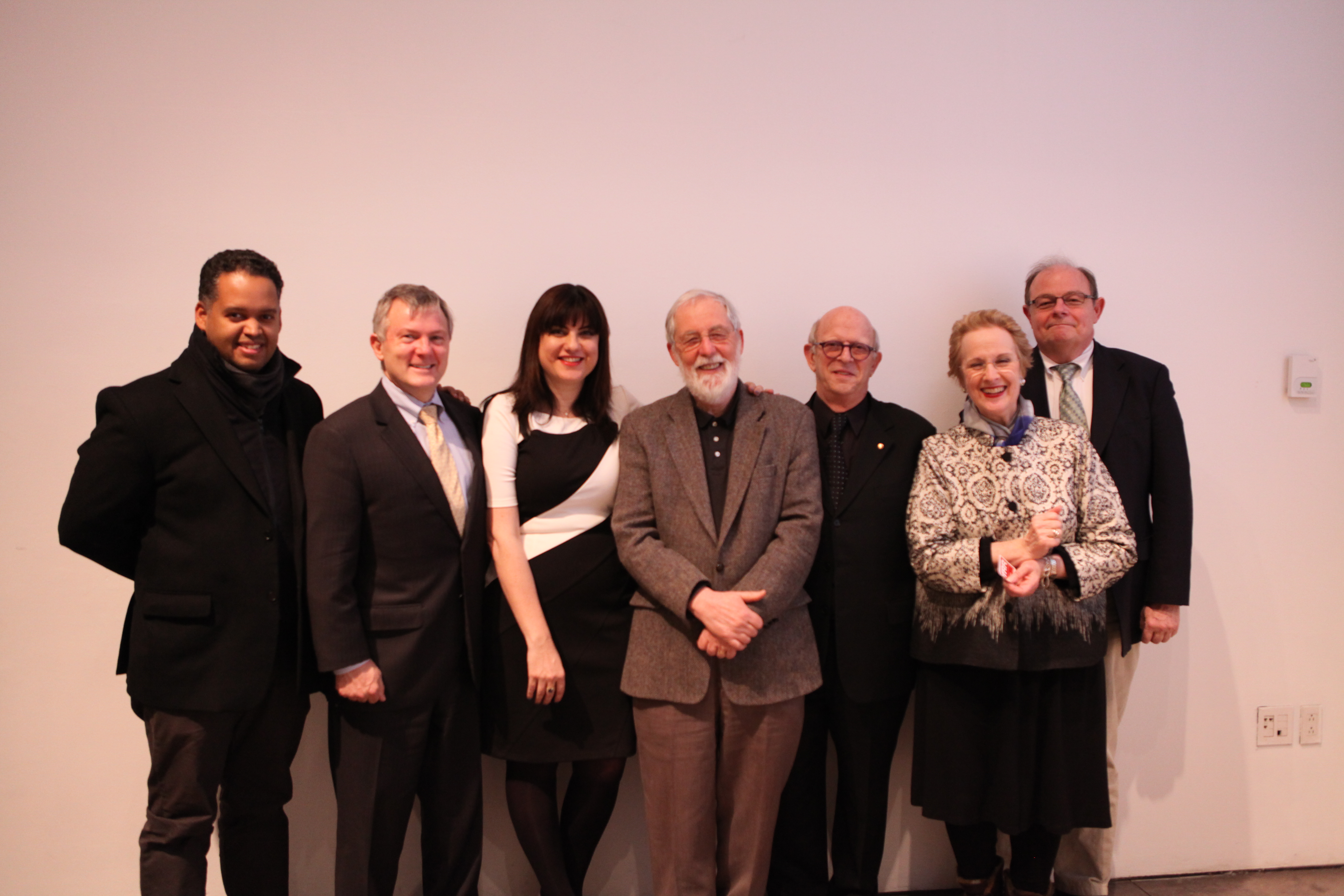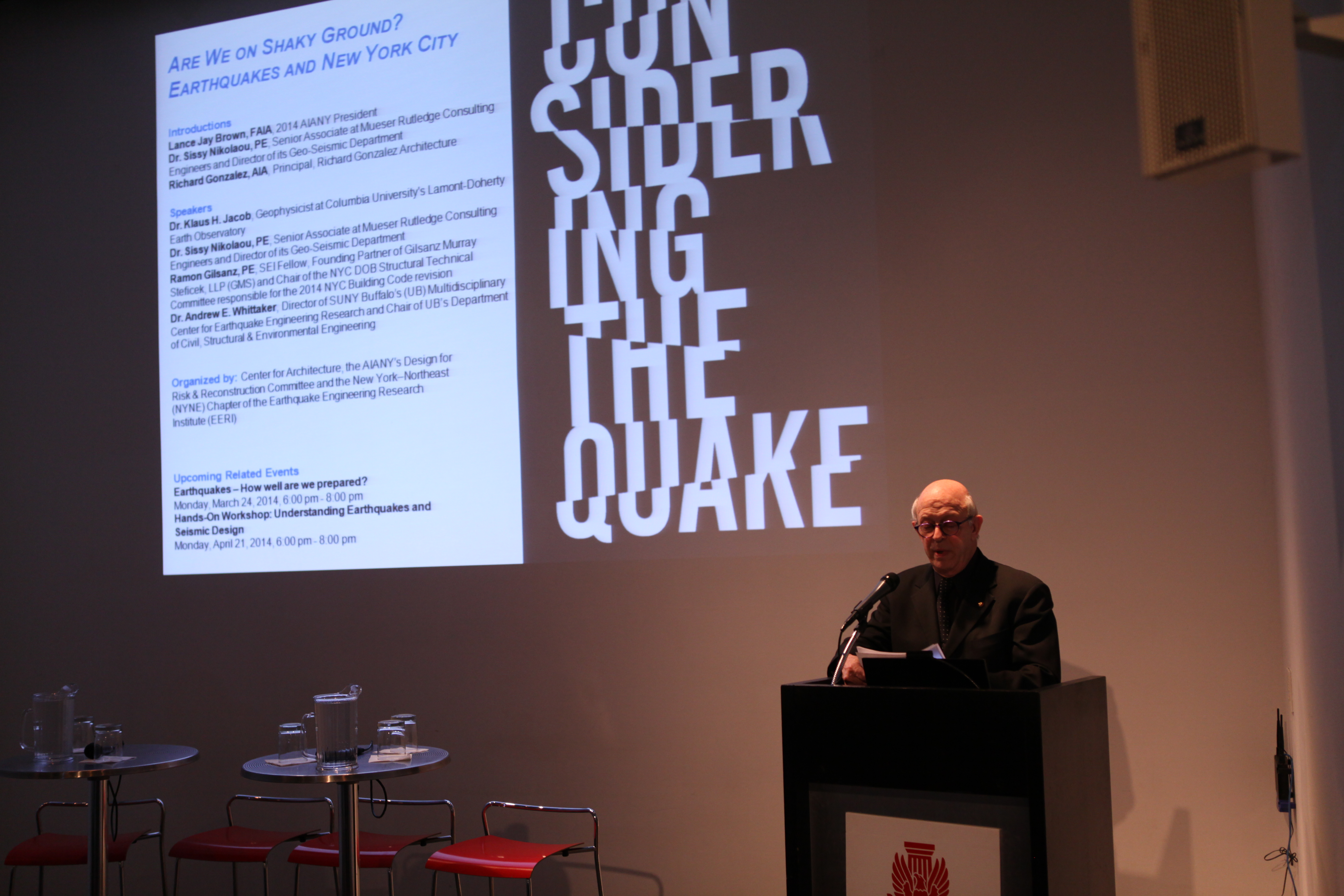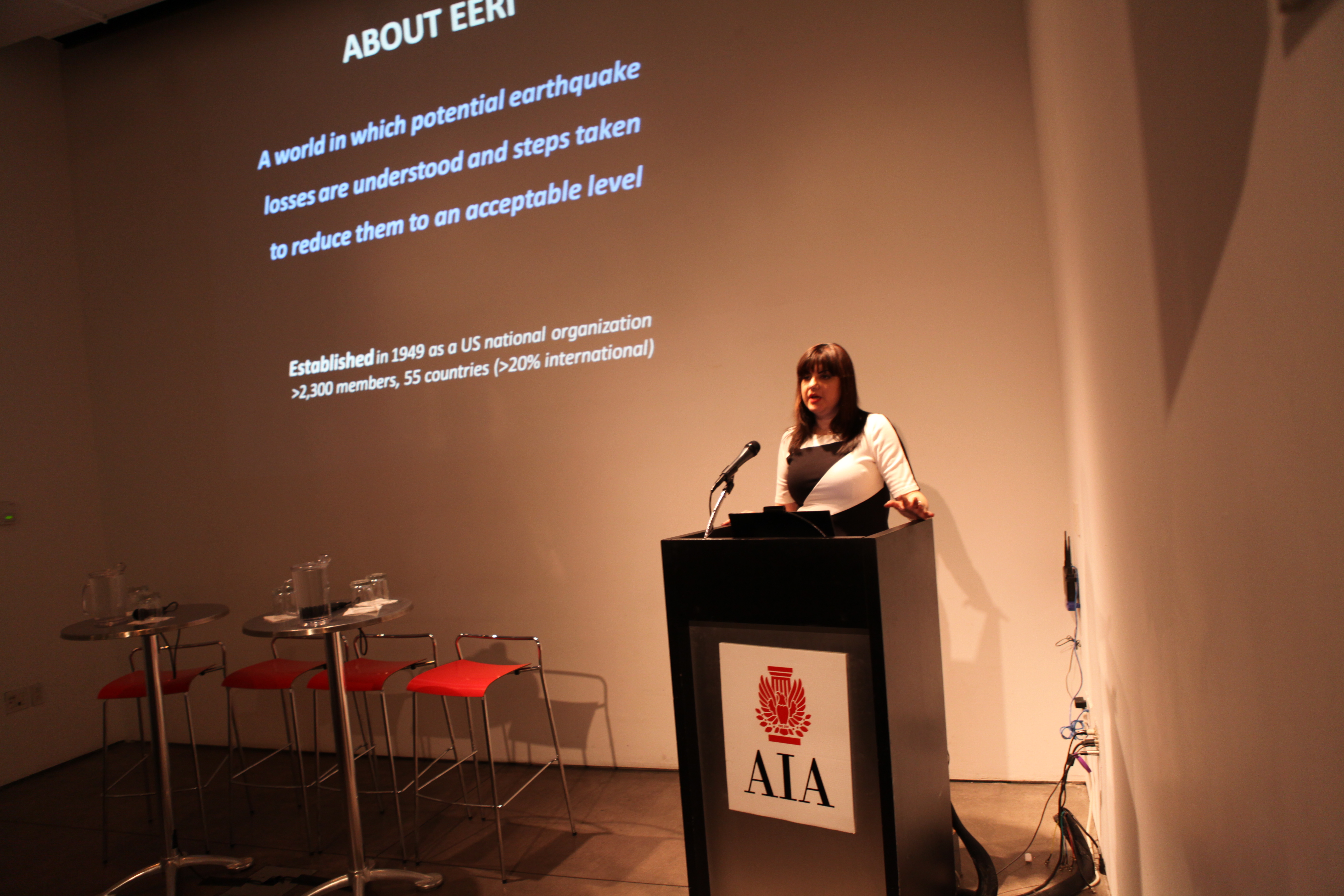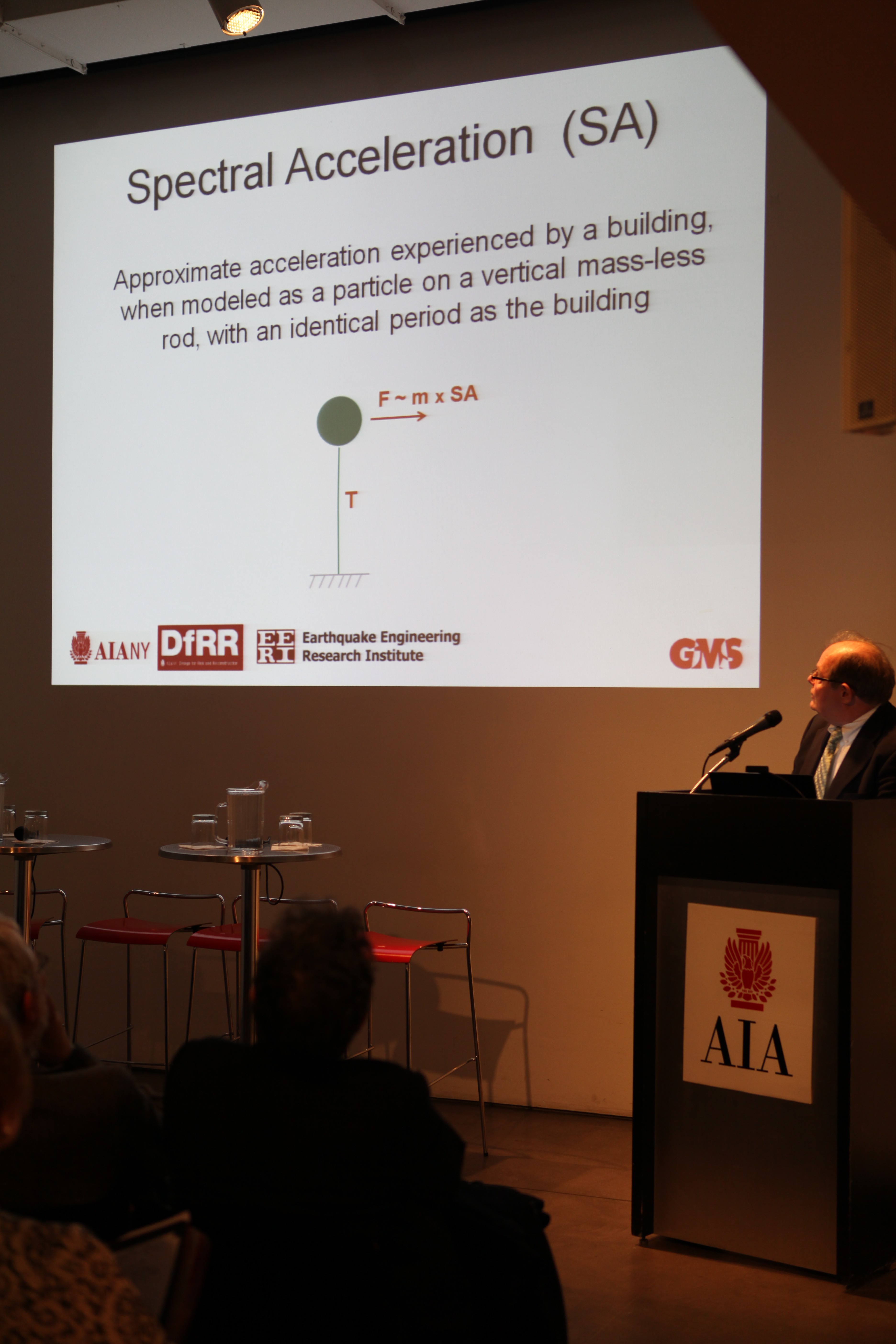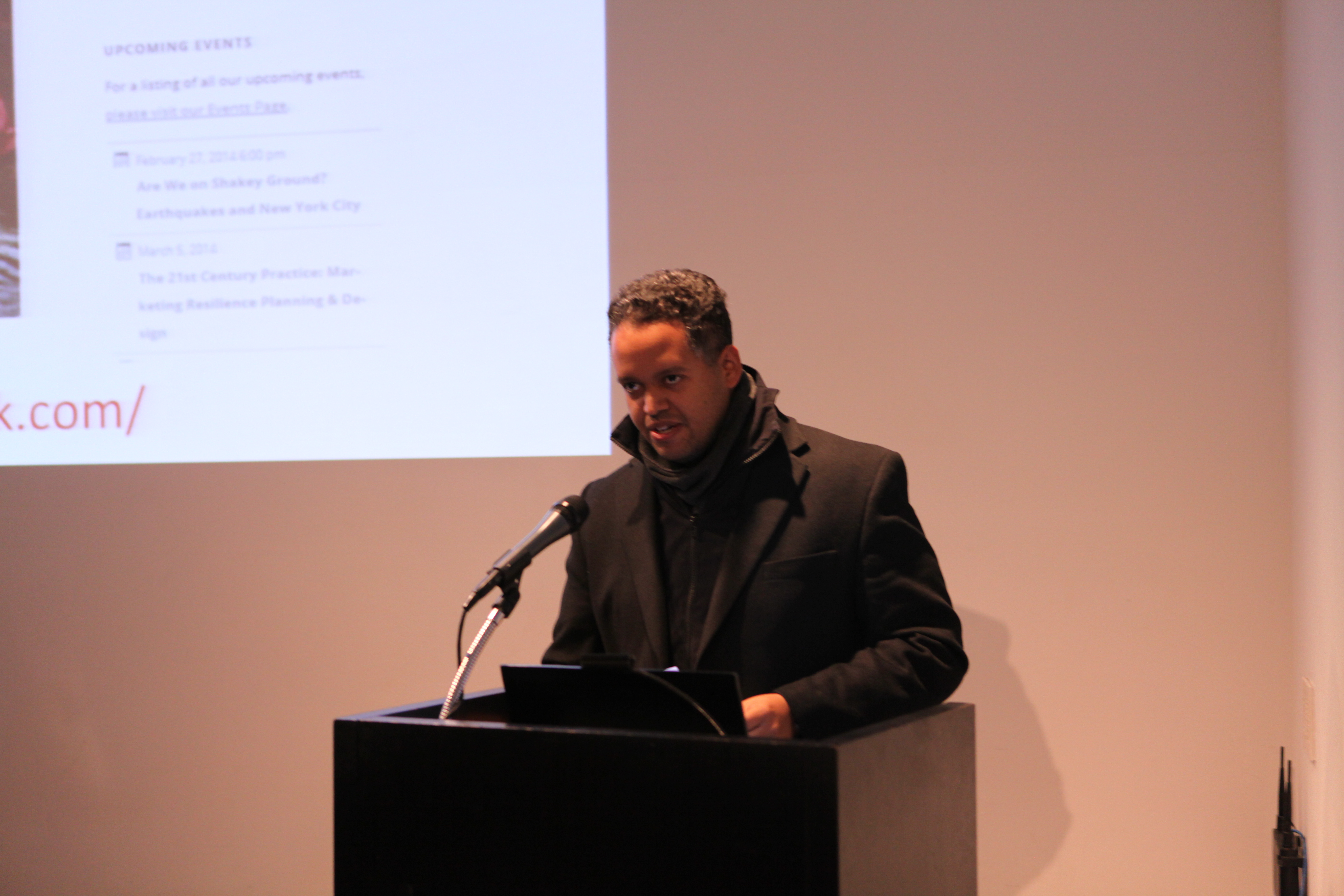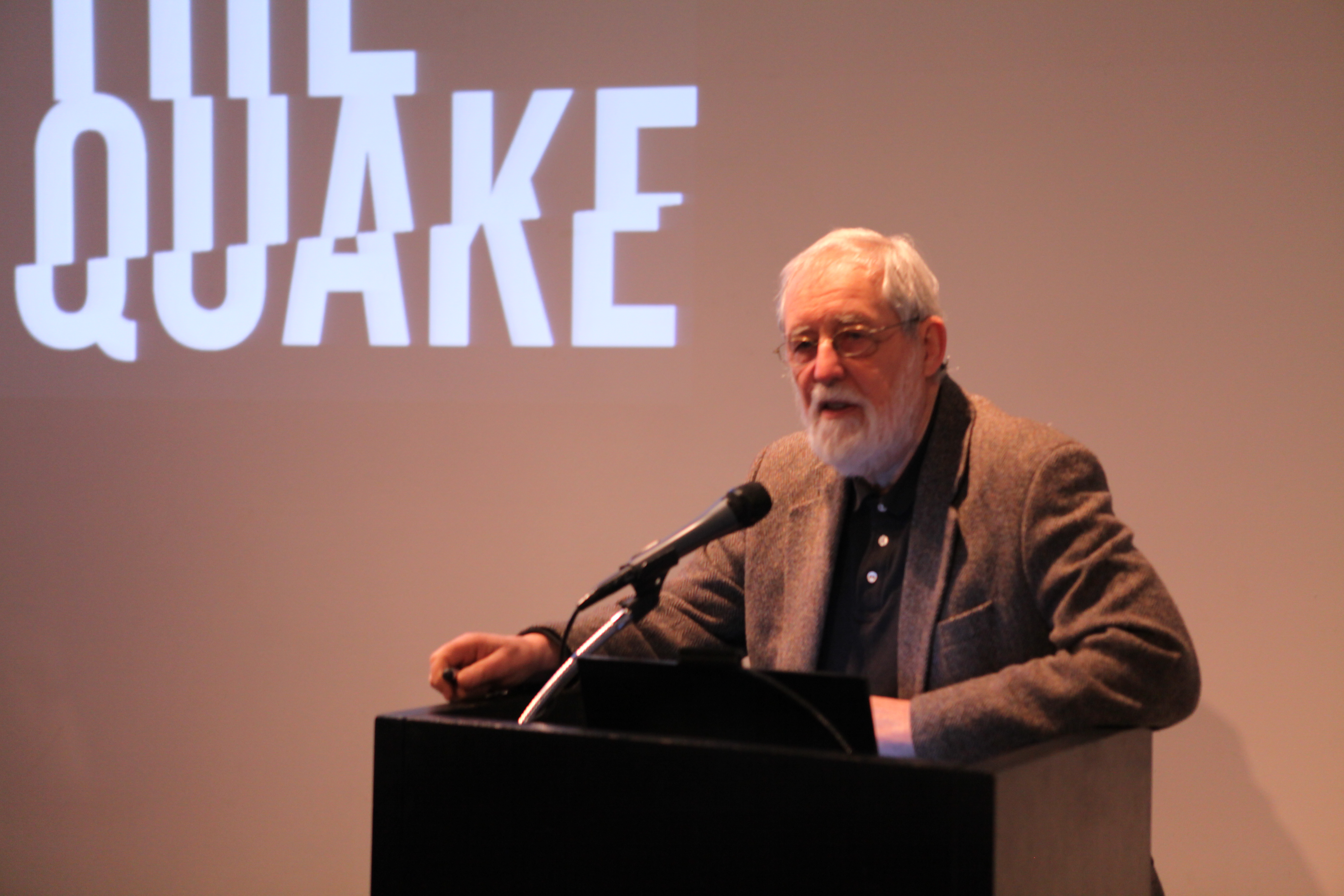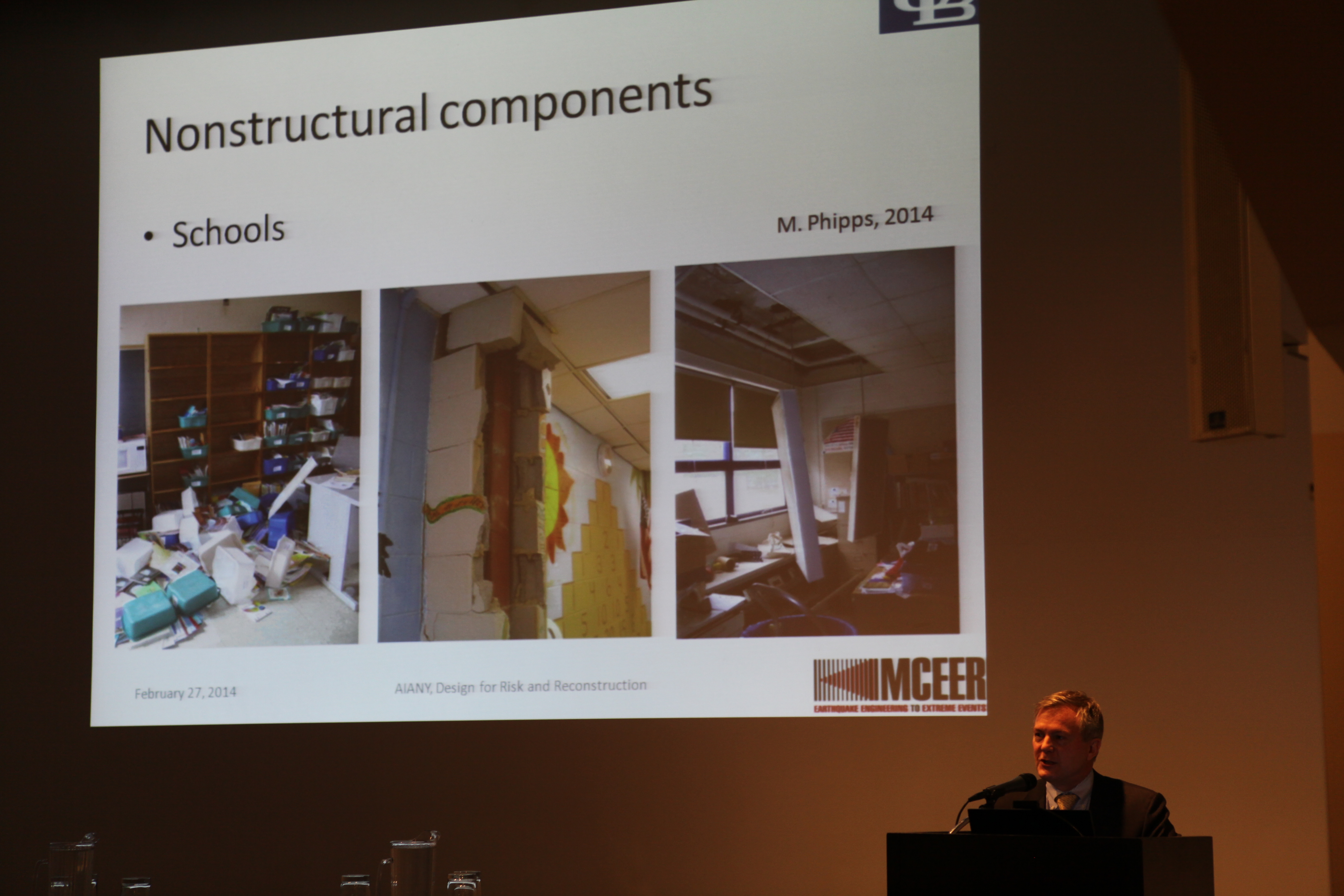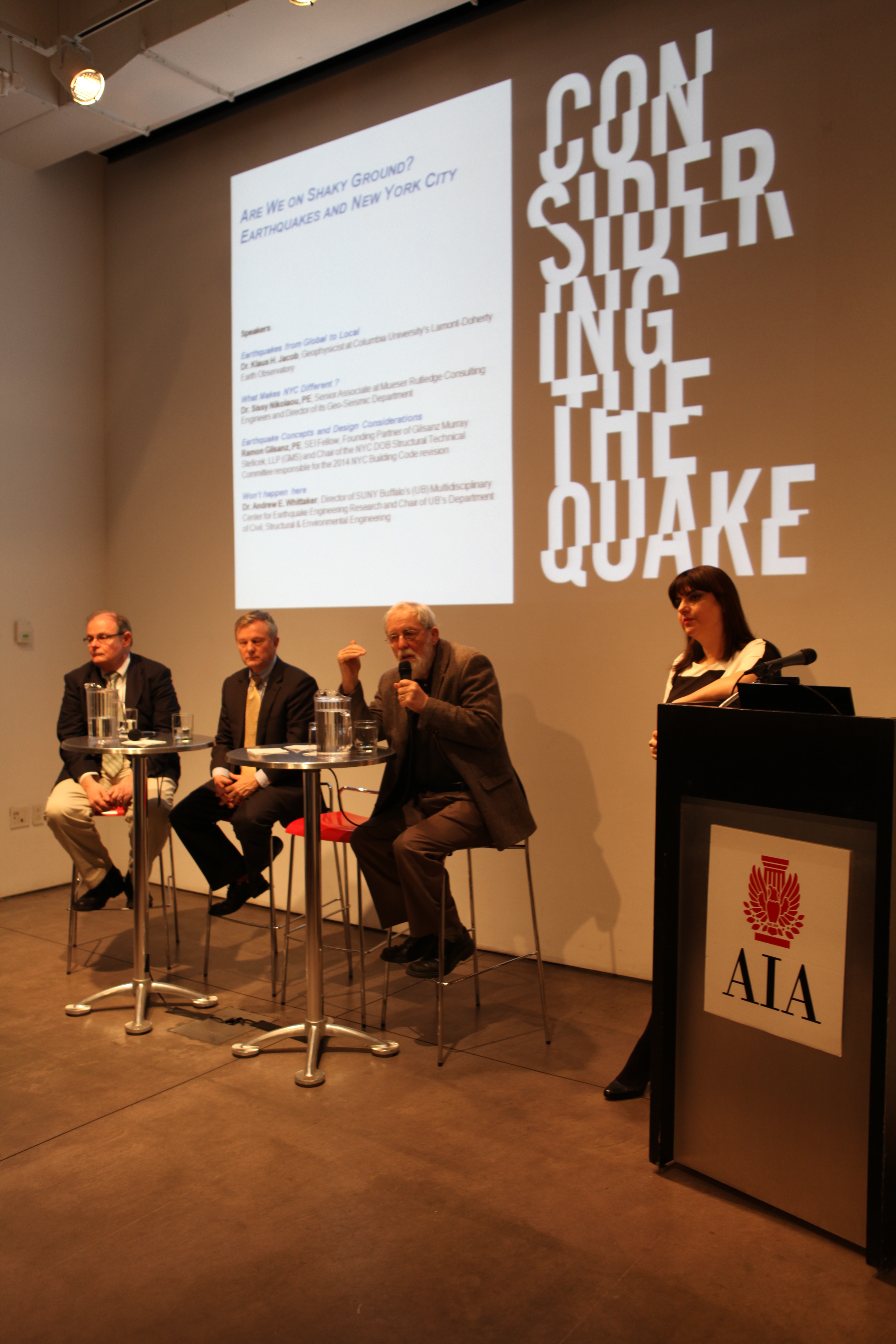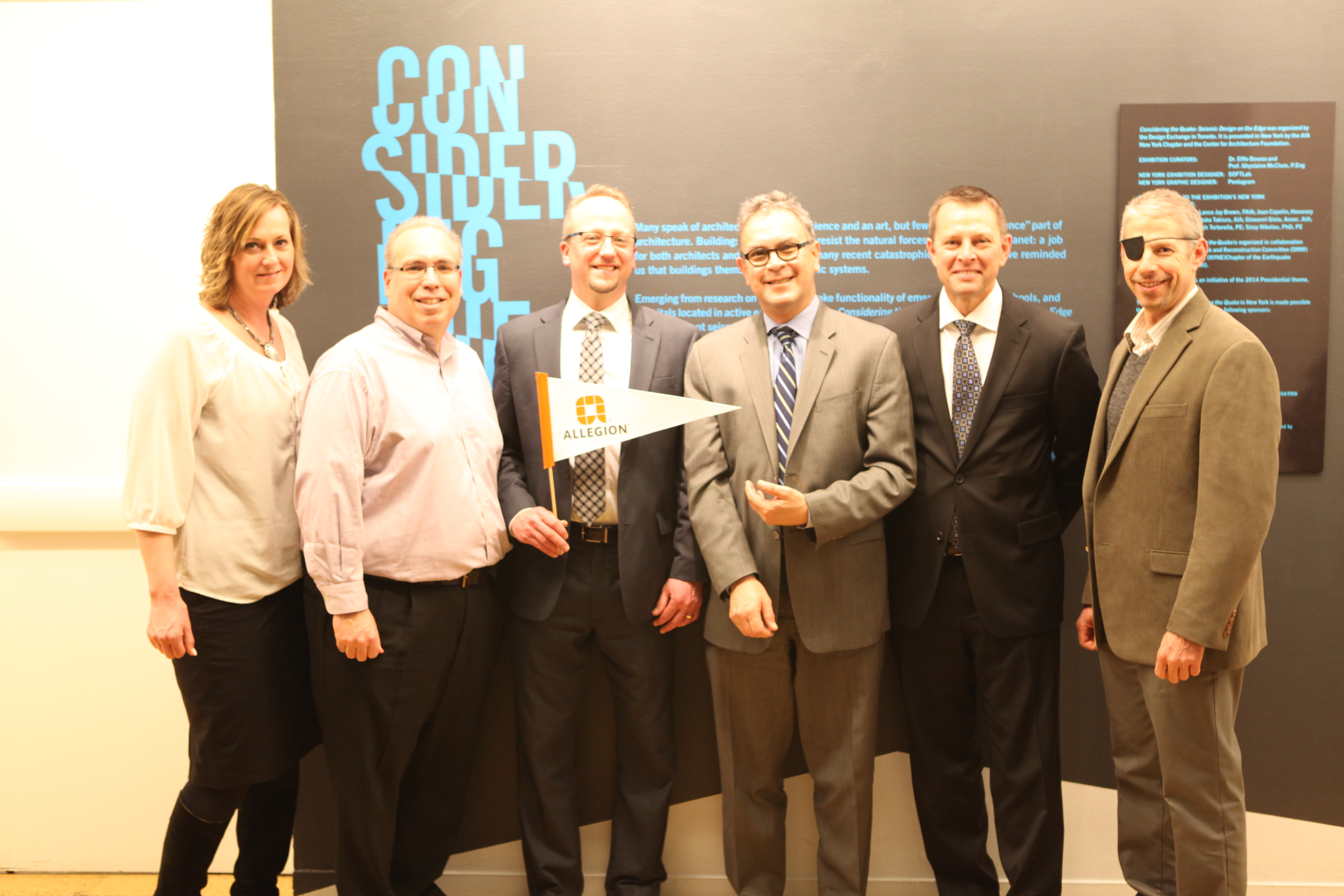by Bill Millard
Humans have been studying earthquakes scientifically for about 2,000 years, Lamont-Doherty Earth Observatory geophysicist Dr. Klaus Jacob says, ever since Han Dynasty-era polymath Zhang Heng invented the first seismometer so that the Emperor would know about distant earthquakes before the news reached him by messengers on horseback. Now we have multiple networks, like the Incorporated Research Institutions for Seismology, the U.S. Geological Survey, and overseas equivalents, linked and sharing information. Knowing a quake is likely doesn’t equate to predicting its timing, but the state of knowledge about locations, depths, and magnitudes helps the design and construction professions prepare for these probabilistic events and mitigate damage.
Jacob may be better known in recent years as the expert who presciently warned New Yorkers about the risks of flooding, proven accurate in 2012 by Superstorm Sandy. He’s also the first-call seismologist for anyone needing detailed analyses of the risks of a major quake in New York, an event that strikes with far less warning. Jacob spoke at the inaugural panel of the Design for Risk and Reconstruction (DfRR) Committee in October 2011; his return engagement on the first DfRR panel linked with the “Considering the Quake” exhibition reminded the audience that, although we have come to know a great deal about these events, “it’s good… not to talk about the last, but the next disaster.” Jacob and his colleagues know more about these contingencies than most people would want to, at least if they ever wanted to sleep again.
There were 141,478 seismic events detected worldwide between 1960 and 2008 by the Global Seismographic Network, Jacob reported, distributed in a clear nonrandom pattern that has provided information about the movement of tectonic plates and the energy released when they grind together. The edges of the Pacific plate have the highest concentration of events and the severest events, but the Northeast has had multiple quakes over recent decades as well, mostly smaller ones with magnitudes of 5.0 or below, along very old cracks in the crust (particularly the Ramapo Fault system across eastern Pennsylvania, northern New Jersey, and Upstate New York). New Yorkers felt the 2011 quake that was epicentered near Richmond, Virginia; East Coast geology makes quakes perceptible and hazardous hundreds of miles from their epicenter, not as localized as western quakes involving softer rock. “It’s a very low rate compared to what happens on a plate boundary, but it cannot be ignored,” he said.
Studies show “a probability within 50 years, sort of a minimum lifetime of a reasonable structure…. By the wisdom of the community in the United States, we’ve decided that 2% in a 50-year chance is sort of an acceptable level to describe the hazard,” Jacob explained. The relative rarity of East Coast quakes, he added, means the records (instrumental data plus anecdotal reports back to 1627) yield information that let us extrapolate a risk of one 6.5-magnitude quake in about 1,000 years, or one 4.9 about every 100 years, with considerable play in the figures. Severe quakes are rare here, not impossible, and the larger exposure area means the hazard is actually proportionately higher, despite the greater absolute rate in the West. This context, Jacob said, explains Gov. Andrew Cuomo’s concerns about hazards to the Indian Point nuclear power plant, built in an era when less local information was available, but now “declared the seismically most vulnerable reactor in the United States.” Earthquakes tend to trigger submarine slides and tsunamis, he added, amplifying concerns over surges like Sandy. Closing with an estimate of the exponentially increasing amounts of debris that would result from quakes of various magnitudes, Jacob exhorted architects to “make sure that this debris is minimized. That’s your task,” achievable only over decades or centuries as the city replaces its building stock.
Sissy Nikolaou, Ph.D., PE, M.ASCE, of Mueser Rutledge and the Geotechnical Extreme Event Reconnaissance (GEER) project, presented dramatic video and still images, including recent material from the Greek island of Cephalonia, where quakes destroy buildings about every 30 years, as well as more publicized events like the 1995 quake in Kobe, Japan. She outlined several prevalent misconceptions (e.g., that the harder rock of the New York area, compared to the younger crust of the West Coast, makes us quakeproof; what it does is transmit shock waves further) and clarified important distinctions, particularly between hazard and risk (the latter involves the economic value of assets destroyed and can be massive in places like New York, which produces 9% of the U.S. economy, even if physical seismic hazard is only moderate). Assessing vulnerability to “the three D’s” of downtime, damage, and death, calls for some counterintuitive recognition, she noted, particularly that “building stronger is not always better.” Protective strategies need to consider soil structure, liquefaction risk, and resonance, ensuring that buildings do not resonate at similar frequencies; a building atop deep, soft deposits is a worst-case scenario, and the Mets’ Citifield – built, she said, on “100 feet of mushy stuff, that when you shake it, behaves like Jello in a bowl” – is consequently designed to an extraordinarily strict seismic standard. Chinatown buildings, too, sited above the Collect Pond once used for potable water, require extra-deep foundations.
Ramon Gilsanz, PE, of Gilsanz Murray Steficek, described seismic events through a musical metaphor: if an earthquake resembles the score, the soil is the player transmitting the vibration, and a building is the instrument that plays it. Engineering approaches to minimizing these destructive performances can recognize a building’s distinctive resonance and plan for damping the “sound” in any of several ways. Chilean engineers, working in a highly vulnerable zone, strengthen buildings with interior shear walls; the Japanese approach is to try to keep the instrument from being played at all by isolating a building’s base from the soil with enormous (and expensive) shock absorbers, aiming to minimize damage enough for nearly immediate occupancy. In the U.S., a cost-effective approach prevails, allowing structures to deform and designing only for life safety, not prompt reoccupancy. Much of the worst damage, Gilsanz noted, occurs after a quake, not during it: in the 1906 San Francisco quake, only 3-5% of the buildings were directly damaged, but fire caused far worse destruction.
SUNY Buffalo civil-engineering chair Andrew Whittaker’s presentation (titled “Won’t Happen Here,” but making no such assertion; a question mark appears implicit) went into detail about the consequences when it does happen. Having lived through two quakes personally in California in 1989 and 1994, he is under no illusions that it is strictly a “left coast problem”. Earthquakes here are inevitable (though perhaps not in any given lifetime), resilience is essential, and the most pressing risk involves “non-engineered building structures,” built before codes were in place or not designed up to code. In New York, unreinforced masonry (URM) is the norm in Federal Era buildings, row houses built between the 1830s and about 1940, many schools, and even firehouses (the risk that firefighters’ own buildings could collapse and trap fire vehicles during a general disaster, he noted, calls for urgent attention). Quake-prone New Zealand, he noted, “substantially underestimated the hazard” before the 2011 Christchurch event, and many URM buildings were damaged to the red-tag level, requiring demolition. Engineered buildings’ protective attributes include lateral resistance, lateral load paths, continuity in floor plates, and redundancy; the Applied Technology Council’s ATC-58 standard, on which Whittaker participated, allows engineers and architects to design for specific levels of risk. An easily overlooked consideration, he added, is the risk from nonstructural components (e.g., ceilings, partitions, elevators, and internal goods), simply “stuff” that also breaks and moves, and that constitutes about 98% of losses in quakes. “Keep in mind,” he noted, “that costs associated with business interruption often far exceed the repair costs.” Imagining a 5.8-magnitude quake striking Manhattan, Whittaker described a staggering cascade of fires, homelessness, impacts on physical infrastructure and social systems, and loss of life.
The Q&A segment included an important and often-overlooked scenario, in a question by DfRR Co-chair Joan Capelin: the phenomenon of induced earthquakes, including those resulting from hydraulic fracturing for fossil fuels as well as quarrying. Both practices have been associated with seismic events, panelists noted, and the fluids pumped into the ground for fracking create additional toxic hazards underground. “When you mess around with Mother Earth,” Jacob summarized, “it often comes around to haunt you if you don’t understand the process.”
Event: Are We on Shaky Ground? Earthquakes and New York City
Location: Center for Architecture, 02.27.2014
Speakers: Dr. Klaus H. Jacob, Geophysicist, Columbia University Lamont-Doherty Earth Observatory; Dr. Sissy Nikolaou, PE, Senior Associate and Director, Geo-Seismic Department, Mueser Rutledge Consulting Engineers; Ramon Gilsanz, PE, SEI Fellow, Founding Partner, Gilsanz Murray Steficek (GMS) and Chair, NYC DOB Structural Technical Committee responsible for the 2014 NYC Building Code revision; Dr. Andrew E. Whittaker, Director, SUNY Buffalo (UB) Multidisciplinary Center for Earthquake Engineering Research and Chair, UB Department of Civil, Structural & Environmental Engineering
Organizers: Center for Architecture, AIANY Design for Risk & Reconstruction Committee, and the New York–Northeast (NYNE) Chapter of the Earthquake Engineering Research Institute (EERI)
